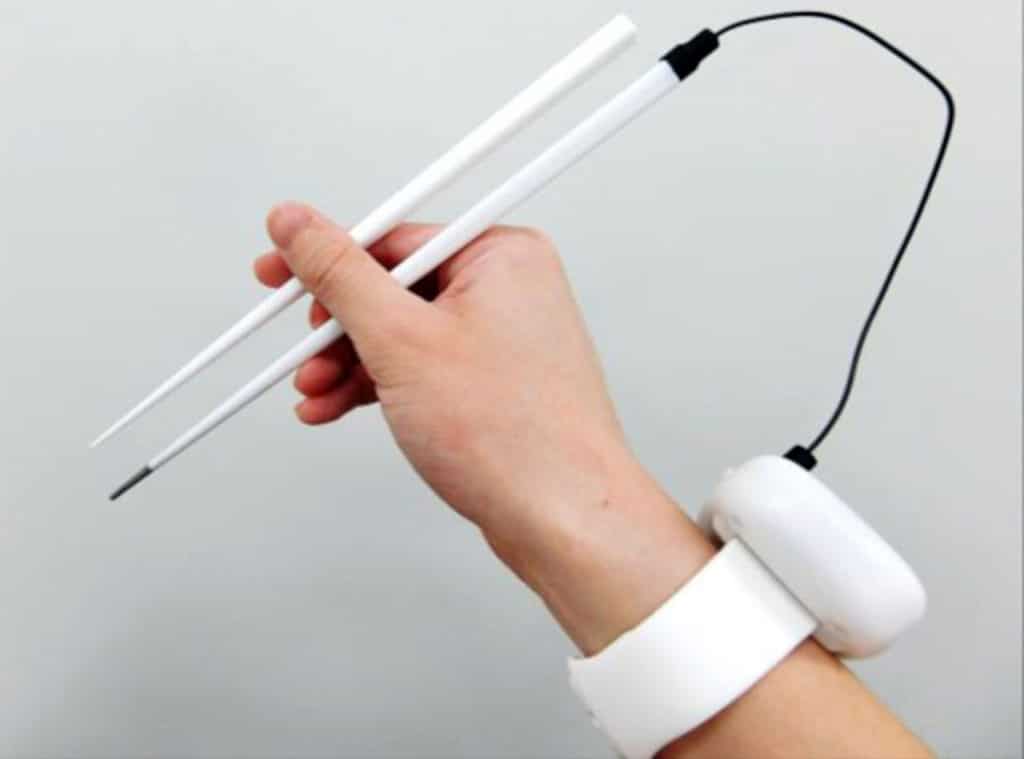Japanese researchers have developed an electrical stimulation waveform and chopstick device that enhances the taste of low-sodium foods, potentially helping people reduce their salt intake. Co-developed by Meiji University professor Dr. Homei Miyashita and Kirin Holdings Company, a Japanese food and beverages company, the chopstick is claimed to enhance tastes using electrical stimulation and a mini-computer worn on a wristband.
The chopstick-shaped device uses electrical stimulation to transmit sodium ions from food to the eater’s mouth. Researchers say the device can enhance the salty taste of low-sodium food by about 1.5 times.
The electrical chopstick features a cable that connects to a power supply, making them bulkier than typical chopsticks. It uses what the team calls “electric taste sensation” that uses very weak electricity – not enough to affect the human body – to adjust the function of ions such as sodium chloride (which is the basis of salty taste) and sodium glutamate (which is the basis of sweet taste), to change the perception of taste by making food seem to taste stronger or weaker.

To verify that their method works, researchers tested the device on thirty-six men and women aged 40-65 years who are currently reducing sodium intake. The researchers used the chopstick device to compare perceived saltiness from a food-imitating gel containing 0.80% and another gel with 0.56% salt to represent a low-sodium food.
When tasting samples imitating low-sodium food, the perceived saltiness was enhanced by a factor of 1.5 when the developed electrical stimulation waveform was applied to the chopstick device compared to without electrical stimulation. In addition, the study confirmed that the intensity of the salty taste of the sample imitating low-sodium food was the same as that of the sample imitating ordinary food when electric stimulation was applied. This suggests that when food with 30% less salt is consumed, a device equipped with this technology can provide a salty taste equivalent to that of a regular meal.
The daily salt intake of Japanese adults is 10.9g for men and 9.3g for women per day, twice the level that the World Health Organization (WHO) recommends. High sodium intake can easily lead to the onset and severity of lifestyle-related diseases such as hypertension and chronic kidney disease. Miyashita and Kirin aim to use the results of this joint research to provide both mental satisfaction from a richer perceived taste along with health benefits derived from nutritional aspects for those who follow a low-sodium diet.
Japanese researchers develop electric chopsticks to make food taste saltier
Source: Global Access News

No comments:
Post a Comment